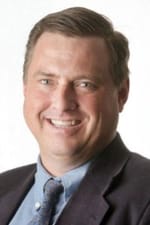Title: investigative reporter and content director
Contact: 605-937-9398 / bart.pfankuch@sdnewswatch.org
Language spoken: English
Demographic expertise: South Dakota, including the Rapid City area, the Black Hills, rural towns and reservations
Topic expertise: agriculture, state government, education, rural issues, Indigenous people, poverty
Potential conflict of interest: Pfankuch serves on the board of the Oyate Prevention Coalition in Rapid City, which works to prevent substance abuse among Native American youth. He will recuse himself from reporting on the organization.
Biography: Pfankuch (pronounced FAN-cook) is Wisconsin native and former editor of the Rapid City Journal. He has worked for more than 30 years as a reporter and editor at newspapers in Wisconsin, Florida and South Dakota, including as reporter or editor at the Eau Claire Leader-Telegram and Capital Times in Wisconsin, and at the Florida Times-Union and Sarasota Herald-Tribune in Florida. He also is a syndicated writing coach who has presented at newspaper conferences across the country. Pfankuch has won more than four dozen state, regional and national journalism awards, including, while at News Watch, agricultural writer of the year from the North American Agricultural Journalists association in 2020, 2021 and 2023 as well as first-place reporting awards in the Great Plains Journalism Awards sponsored by the Tulsa Press Club and South Dakota NewsMedia Association. Pfankuch lives in Black Hawk.
Professional memberships: Investigative Reporters and Editors, North American Agricultural Journalists, South Dakota NewsMedia First Amendment Committee
Social platforms: X/Twitter; LinkedIn
Archive of work: South Dakota News Watch

Bart Pfankuch
Total 328 Posts
Rivers at risk: Studies reveal health hazards in Rapid Creek, Big Sioux River
Two separate scientific studies released in the past year reveal serious human health concerns for South Dakota’s four most prominent waterways: Rapid Creek, the Big Sioux, Cheyenne and Missouri rivers.
One study showed that Rapid Creek and the Big Sioux River host genetic markers for the most dangerous form
Rivers at risk: State, cities place few limits on farm and urban runoff into rivers
Part of a series of stories examining river quality in South Dakota.
State response to Smithfield ammonia release criticized
Water quality advocates say the state of South Dakota acted prematurely in reporting last week that human health was not at risk from high ammonia releases at the Smithfield Foods plant in Sioux Falls.
The Department of Environment and Natural Resources filed limited public notice before the violations stopped and
Rivers at risk: Read about your city’s water pollution concerns
Every day, South Dakota’s 20 most populous cities dump 49.2 million gallons of treated human and industrial wastewater into state rivers and creeks. Here is a look at those 20 cities and how they process wastewater, what it costs, recent inspection results, and how much is dumped where.
Rivers at risk: Pollution problems persist as state oversight lags
Part of a series of stories examining river quality in South Dakota.
Russian woman and South Dakotan connected by mysterious business
For reasons known only to him, embattled political operative Paul Erickson started a new business in South Dakota in June.
By spending just $150 and filling out some online paperwork, Erickson formed Medora Consulting LLC, a company with no stated purpose or partners.
The LLC, or limited liability company, was



